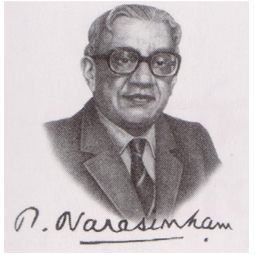M Narasimham was survived by his son Radhakrishna (Sasha) Narasimham, who recently got retirement from the ADB.
Narasimham chaired two of two high-powered committees on banking and financial sector reforms. Such is the glory of the two Narasimham Committees that to date some of their aspects are employed. He is responsible for ideating mergers and creating strong megabanks by the suggestion of the Narasimham Committee.
His two iconic reports came out in 1991 and 1998 that laid the foundational framework for the reforms of the banking sector and strengthening of the financial system in the country.
Private sector banks such as ICICI, HDFC, Axis, Kotak etc are operating in India due to the recommendations put forth by the first Narasimham Committee. Also, the Asset Reconstruction Companies (ARCs) that specialise in buying “NPAs or Bad Assets” yet to take shape.
Narasimham Committee has a huge impact on framing the financial system of India.
Former RBI deputy governor Usha Thorat, Narasimham was an intellectual giant, a “brilliant mind,” a “fantastic draftsman” and a “visionary”. Yet, he was a “typical Southie – simple living and high thinking. Very soft-spoken and gentle, but what a sharp mind!” the former RBI governor added.
“Though I never worked with him, we understood that he wrote the RRB (regional rural bank) report in 1976 in one day. He felt very strongly that rural banks should have a local feel and local touch, and they should have the professional approach of the commercial bank. This is how the RRBs came into existence,” Thorat said in a statement to Business Line.
Jairam Ramesh, economist and Congress MP on his Twitter and described in his tweet Narasimham as a man who “combined seriousness of intellectual purpose with a wonderful sense of humour and great wit. Narasimham was the grandson of Dr Sarvepalli Radhakrishnan and nephew of that outstanding historian Sarvepalli Gopal.”
So far, Narasimham was the first and the only governor to be appointed from the Reserve Bank cadre. Though, his tenure for a short period of seven months between May and November 1977. Narasimham joined the bank as a Research Officer in the Economics Department. Later he joined the government and before joining the position of governor he served as Additional Secretary, Department of Economic Affairs.
His recommendation on Indian Banking sector reforms plays a vital role in the functioning of banks today. It has become normal that all reports start by referencing the hallowed “Narasimham Committee Report” I and II.
The main recommendations of the first Narasimham committee were about deregulation of interest rates, phased reduction in statutory liquidity ratio (SLR), and setting up of an asset reconstruction fund.
Similarly, the second committee focused on a stronger asset recognition framework to deal with NPAs (non-performing assets). The committee’s recommendation is the reason that the RBI introduced the 90-day income recognition framework. Under this, an asset the repayment is due for more than 90 days will be tagged as ‘bad’. The committee also recommended that banks should also pay greater attention to asset-liability management to avoid tackling liquidity and interest rate risks.
“It would be desirable that banks evolve a filtering mechanism by stipulating in-house prudential limits beyond which exposures on single/group borrowers are taken keeping in view their risk profile as revealed through credit rating and other relevant factors,” the committee said on the need for the mechanism or large borrowing accounts and systems to identify potential NPAs.

